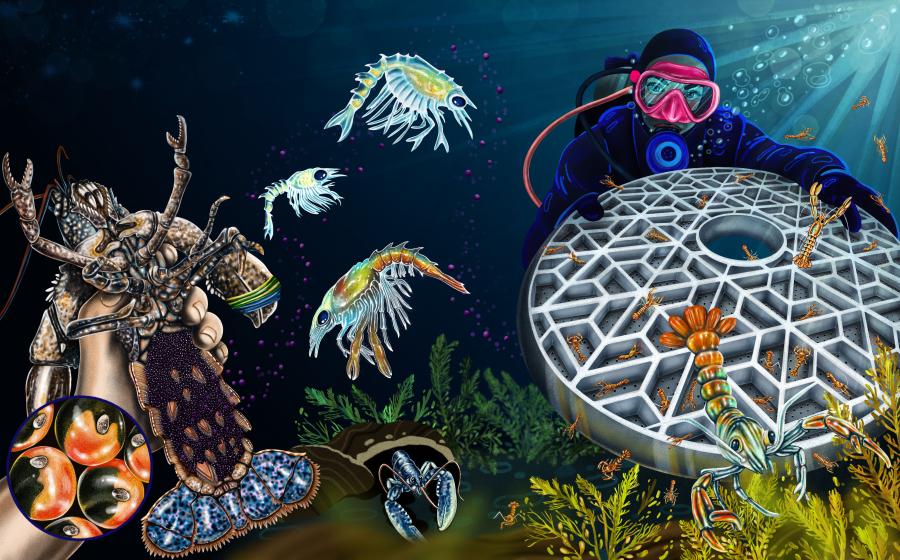Failure to Equalize | Lessons for Life

Steven P. HughesNeedless pain can be avoided with proper ear care.
Zack was getting geared up for the first dive of his trip. He planned to make seven dives over the course of his vacation, and although it had been a long time since he had been underwater, he was excited to be back.
Once all of the divers had geared up, Zack entered the water with the group and started his descent. Zack felt some pain in his left ear but was able to work through it and continue the dive. Everything was fine during the dive until he felt what he described as an “explosion” in that same ear.
The Diver
Zack was a relatively new diver with fewer than 20 dives under his belt. He hadn't been diving regularly and was just getting back into it. He was in his mid-30s and in good health. At the time of the dive he had no known health conditions.
The Dive
The dive day started normally. There were good diving conditions and clear skies. Zack noticed he was a little congested, but he assumed it was just due to the air conditioning in his hotel and was certain things would clear up once he was out in the sun and fresh air.
During his descent, Zack noticed some pressure in his left ear at about 20 feet of seawater. He signaled to the divemaster that he was having trouble before ascending a few feet to relieve the pressure and attempt to equalize again. Once the pressure eased, he continued the dive.
The Accident
Zack wasn’t making a particularly rapid descent. He was just following along with the other divers in the group and matching their descent rate.
At around 50 feet of seawater, he felt the pain returning in his left ear. Before he could ascend again to relieve the pressure, he felt a pop in his ear. His ear throbbed, and for about a minute he was disoriented and dizzy.
Just as quickly as it started, the pain went away. Zack finished the dive and completed the rest of the planned dives over the next three days without incident. He did notice his ear felt “full,” and he experienced mild pain the rest of the week. He also found that he could not hear clearly.
Analysis
Ear problems are one of the most common dive injuries. Good ear health is paramount for divers, but we often take our healthy ears for granted. Ears should be equalized early and often—before the presence of pain.
In short, the middle ear is an air space behind the eardrum that allows your ear to adjust to the pressure of the water. It is connected to the throat through the eustachian tubes.
When you equalize, you are adding air, which is at ambient pressure because of your regulator, to that air space. If the eustachian tube is blocked for any reason, the water pressure forces the eardrum inward. The body compensates for that by adding fluid to the middle ear space or, if the pressure outside builds up too quickly, the eardrum will rupture, and seawater enters the middle ear. That’s what happened to Zack when he felt that explosion. Anyone with a suspected eardrum rupture should see a doctor immediately to address possible infection. Luckily, many eardrum perforations will heal on their own or with a little help from a doctor once the infection is healed.
Not understanding what had happened to him, Zack continued diving the rest of the week. When he finally consulted a doctor, he was diagnosed with middle-ear barotrauma and a bacterial infection from seawater in his ear. Zack was placed on antibiotics and told to keep his ears dry. It took eight weeks for him to be able to return to diving.
The disorientation and dizziness Zack felt at depth was the cooler seawater entering his middle ear. The structures in the ear that handle balance are in the inner ear. When cold water enters the middle ear it rapidly cools the inner ear, and causes all sorts of problems.
The eustachian tube is often compared to a straw. If it is bent or kinked at all, it is difficult to move air from the throat to the middle-ear space. There are various ear-clearing techniques beyond the basic Valsalva maneuver that most divers learn.
A couple of basic tips for making sure your ears stay equalized to the ambient water pressure are to descend slowly and feet first. If one ear is slower to equalize than the other, stretch your neck by pointing the slow ear back toward the surface. That can help straighten out any kinks.
Using decongestants to help you equalize may seem like an easy fix, but you are better off diving without medicines. Decongestants such as pseudoephedrine tend to wear off faster underwater, causing congestion to return during your dive. Nasal sprays are known to cause a rebound effect after about five days of continuous use. Decongestants can also raise your blood pressure and your heart rate, so it is best to avoid using them for diving.
Lessons For Life
- Take care of your ears. Don’t dive if you are feeling stuffed up or having trouble equalizing on the surface.
- Equalize early and often. Many divers will equalize predive to avoid any problems. At a minimum, you should equalize every few feet during your descent.
- Respond to sudden pain. Do not continue to dive if you feel pain in your ears—especially if it won’t go away. That is an indication of a larger problem.










